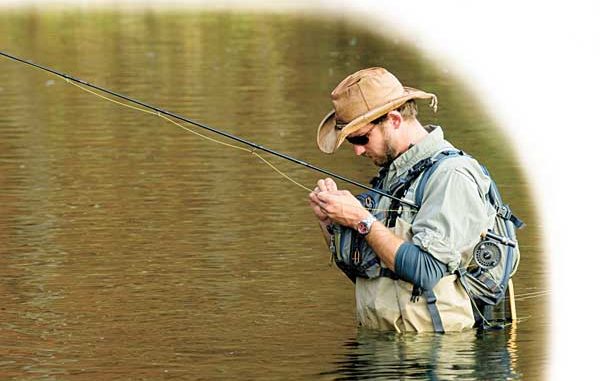
Don’t worry over trout flies this month. Streamers do the trick in cold weather
It’s that time of year again —delayed-harvest trout season in many Upstate trout streams and rivers.
From Nov. 1 through May 15, only single-hook flies or lures may be used in these selected waters, and all trout must be returned to the water alive and unharmed. After May 15, general regulations apply once again; fish may be harvested with no bait restrictions.
This month, when delayed-harvest season opens, the rainbow and brown trout are relatively easy to catch with a fly rod and reel, and they are certainly not selective. There is no need to agonize over the fly box trying to choose the correct fly for the situation or “matching the hatch.”
One of my favorite techniques when fishing delayed-harvest trout water is to use streamers. These fresh-from-the-hatchery adult trout cannot resist a flashy streamer such as a white or pearl Zonker, Wooly Bugger in any color with some sparkle flash tied in, or a Muddler Minnow stripped quickly through the a pool.
The fish will sometimes only follow or short-strike the fly if they are being somewhat tentative. I never stop the retrieve, slow it down or speed it up when this happens. I simply cast right back in the same spot, strip the fly as normal, and that often results in a hook-up. Like I mentioned earlier, these are not sophisticated fish.
This type of fishing is not as challenging as casting for native, wild fish. So what? If I’m having a good day, I use this opportunity to hone my streamer-fishing techniques. It’s much more fun than practicing in the backyard, and if the fish are willing to play along, so much the better!
The very best technique for fishing streamers in delayed-harvest waters or for wild fish is the down-and-across method. Once you position yourself upstream of a likely holding area for trout, cast downstream and across at about a 45-degree angle to the opposite stream bank. The current’s tension on the line will pull the fly laterally through the pool downstream. You can regulate the speed by throwing either an upstream or downstream mend in the line. An upstream mend will slow the fly down and make it swim deeper, while a downstream mend will speed it up and make it run shallower.
When the fly has moved completely through the pool and is directly downstream, start to strip it back toward you. The moment the stripping begins is when a strike often occurs.
With the same amount of line off the reel, take a step or two downstream and repeat the entire process. After several cycles, you can cover an entire pool very efficiently.
Another method that works well on delayed-harvest or recently-stocked trout is standing downstream of the targeted pool and casting the streamer into the head of the pool. The fly can tumble back down toward you through the current with an occasional twitch from your rod, or you can dead drift the fly. It’s much more difficult for the fish to detect your presence using this approach, because they are almost always facing upstream.
From this downstream approach, it is not best to employ an aggressive retrieve by stripping the fly through the pool, since this will have the fly swimming directly toward the upstream-facing trout. This is not natural behavior on the part of any baitfish or crayfish, so it often spooks the fish and puts them down.
The Chattooga River from the S.C. 28 bridge upstream for 2½ miles to Reed Creek and a 1-mile section of Cheohee Creek at the Piedmont Forestry Center in Oconee County are two stretches of river in South Carolina that are regulated as delayed-harvest water.
The average fish will be a brown or rainbow trout about nine to 14 inches long. Every year, fish in excess of 20 and even 30 inches are caught, photographed, and released. The possibility of hooking one of these monsters is enough to keep things interesting and that streamer working in the water.
Using one of the two streamer techniques mentioned above gives you a good shot at one of those trophy fish. Watching an aggressive trout chase your fly and slam it is a pure adrenaline rush! It’s exciting, and more importantly, it’s fun. Now is the time. Don’t wait until next year!



Be the first to comment